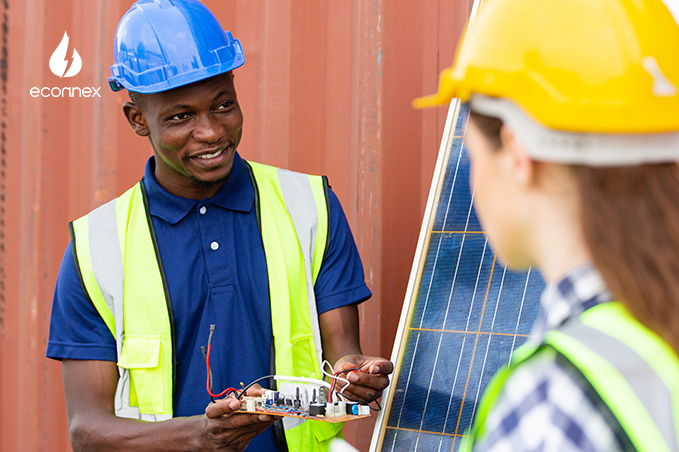Moving to a new home but haven't connected it to the web yet? Let Econnex guide you through the journey of finding a suitable internet deal for your new space.

Published on 15/04/2024
By William Walton
NBN Comparison
Connecting to the web is a top priority for everyday Aussies moving into a new home.
It makes sense, too, as our daily lives are intertwined with the internet in various ways. Jobs must be maintained, online orders must be made, essays must be submitted; the list goes on. Any disruption to your access could prove a significant hassle.
We don’t want that for you. So, it’s time to discuss your options. Any time you move into a different property, whether it be a new build or otherwise, there are steps you can follow to source a suitable deal. The long and short of it is that once you’ve assessed what type of connection you need, broadband comparison tech (like our Econnex platform) is your new best friend.
Let’s help make your move a little easier.
If you’re moving to a brand-spanking new property, there are a few extra considerations.
The required cabling may not yet be in place, as you’d otherwise find with an older building. That means you may need to arrange the laying of fibre optic cables before connecting to an NBN or Opticomm plan.
If you’re the homeowner, you should consult with your builder and NBN Co. prior to your move-in date to arrange for the installation of the appropriate equipment. At the time of writing, NBN Co. offers a standard installation to pre-existing properties free of charge. However, newly developed properties incur a charge of $300, paid either by the ISP or the customer. Moreover, there may be additional fees depending on the peculiarities of your property or your chosen retailer.
The sooner you can discuss your internet needs with your builder, the better. They can help you determine the best locations for voice or data points and provide a quote for any additional wiring, allowing for a less stressful process.
An internet connection for a new home must match its inhabitants' needs.
If you’re moving with the same people you lived with previously, then a similar NBN or Opticomm plan to what you had before may still be appropriate. However, if you’re moving with a new group, moving in with a partner, or even going solo, you should reassess your broadband requirements before proceeding with a new home internet deal.
Every person needs a unique mix of online services and applications to conduct work or stay socially connected. Adding or subtracting a household member will naturally affect net broadband usage, meaning you may need to reassess what type of plan you need. Where previously, an NBN25 plan adequately did the job, you may now need an NBN50 plan to accommodate additional people in your new house, especially if they are regular gamers or streamers.
Generally, a house of four or more people will require an NBN50 connection or higher. Otherwise, there may be interruptions to your service, frame drops, high ping, stuttering streams, or slow downloads. Of course, a lower tier may be appropriate if everyone in the house leads a minimal online life. It all depends on their usage.
You can assess the broadband needs of your household with a few simple, fact-finding questions:
If the answer to any or all of these questions is yes, you may need a higher-capacity internet solution, such as NBN50 or NBN100, to cater to everyone’s needs (especially if you’re all going to be online at the same time).
If not, perhaps you could get away with a plan with lower download/upload limits, such as an NBN25 plan. Thankfully, most modern plans don’t cap the amount of data you can use over a billing cycle, so you just need to focus on speed.
Once that’s all determined, the following steps are relatively simple.
With the initial legwork out of the way, let’s discuss the process of identifying an appropriate internet plan for your new home. Once you have determined the NBN or Opticomm plan tier that should suit you and the other inhabitants, comparing the options available from multiple retailers is a breeze…
That’s all you need to do to arrange an internet connection for your new home. Do a little groundwork, assess everybody’s (broadband) wants and needs, and jump onto Econnex to complete the job. In little more than five minutes, you could tick this important action off your moving list.
So, take the initiative and compare broadband plans today for a more seamless move.


